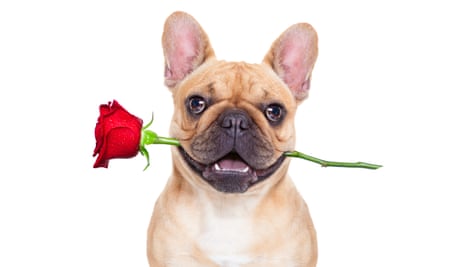Those mournful, protruding eyes might be cute; the eye infections, not so much. The snorts and grunts are endearing – except when you remember it is because the animals are trying to breathe.
The trend for flat-faced dogs, such as pugs and French bulldogs, shows no sign of stopping. This week, the British Veterinary Association (BVA) called on greeting cards manufacturers to stop using pictures of these dogs on Valentine’s Day cards – they have become a staple image, and are also often used in advertising.
The health implications of flat-faced, or brachycephalic, dogs are well-documented – their narrow windpipe and nares (nostrils) can make breathing difficult, their prominent eyes are susceptible to disease, and mothers often need caesarean sections in order to give birth to puppies bred to have enlarged, misshapen heads.

But that hasn’t stopped their popularity, and our desire for the flat-faced look has also spread to cats and rabbits. “We have reached the stage where many Persian [long-haired] cats have such flattened faces they have no nose profile at all,” Andy Sparkes, vet and co-editor of the Journal of Feline Medicine and Surgery, has said. “These animals often have problems breathing or eating, and the eyes can be affected by ulcers because the eyelids do not cover the protruding eyeball.” Even so, Persians are now among the UK’s five most sought-after breeds. In rabbits, the flattened face and lengthened bottom jaw means their teeth don’t line up, and so can’t wear down evenly, causing pain and infections.
It is, for many people, an appealing look, and seemingly perfect for social media. On Instagram, there are more than 6m posts under the #pugsofinstagram tag, and 15m posts tagged #frenchbulldog. Last year, the Kennel Club issued a welfare warning after predicting it could overtake the labrador by the end of this year as the most popular breed in the UK, for the first time since 1990. They are already the second most-registered breed.
“We’re concerned about growing numbers,” says John Fishwick, president of the BVA. “We’re seeing a huge increase in demand for them, largely because of celebrity endorsements. Perhaps people who are not attuned to their individual problems are suddenly clamouring for these puppies. That seems to be driving a lot of breeding. What we’re asking for is to move away from the more extreme versions. We work with the Kennel Club and the breed societies [to encourage] the breed standards to change, to make a healthier version of the animals.”

Comments (…)
Sign in or create your Guardian account to join the discussion